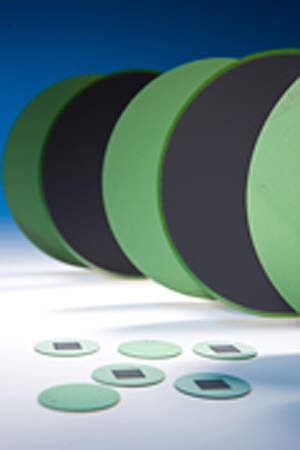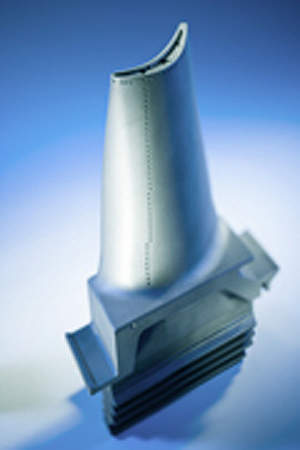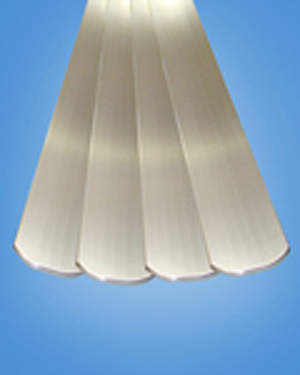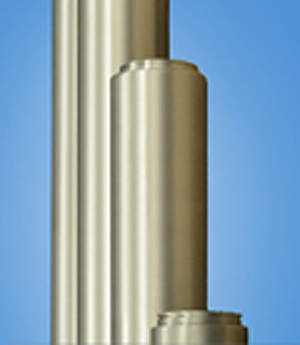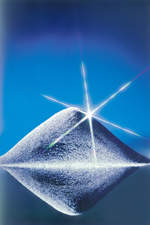
H.C. Starck
Energy Production, Transformation and Storage Materials
Subscribed
You have successfully submitted your enquiry. Someone from our company will respond ASAP
About Us
Energy is the driving force for life and absolutely essential for all forms of comfort. H.C. Starck is a reliable partner in all areas of energy production, transformation and storage – whether on the basis of fossil fuels, natural power sources such as water, wind or sun, or from nuclear energy.
Tungsten metal powders
For the extraction of fossil resources, drill heads perform the most difficult task by feeding through stones and rubble. Tungsten metal powders from H.C. Starck provide the necessary hardness and reliability for these high-performance tools. H.C Starck supplies specially designed powders for drill heads used in oil and gas drilling – tungsten and tungsten carbide – which meet the special requirements demanded by this high-performance tool.
Tungsten alloys for protection of data logging instrumentation
Critical to oil and gas exploration is the accurate location of oil and gas deposits. With tungsten alloys, H.C. Starck fabricates products designed to shield data logging instrumentation and isotopes from harmful radiation and the rigours of drilling. Tungsten alloys enhance the real-time data logging while optimising the drilling performance, improving rates of drilling stability and reducing the cost and time to locate these valuable resources.
Synthetic polycrystalline diamond (PCB)
When a rock formation requires even more robust drill bits, diamond-coated carbide is used. H.C. Starck is a major supplier of niobium, tantalum, and molybdenum strip material used in the manufacture of polycrystalline diamonds. Critical control of grain size and thickness is a key advantage of raw materials from H.C. Starck.
Drilling alone is not enough: in order to make the ground permeable for oil and gas, the drill casing is perforated. The explosive charge shoots tungsten through a funnel-shaped shell into the rock stratum, creating cracks through which oil or gas can penetrate and flow into the wellbore.
Molybdenum trays
The nuclear industry uses boron carbide, amorphous boron and tungsten semi-finished products for shielding against radiation, and in conventional power stations our tungsten and molybdenum chemicals are used for DeNOx catalysts for the denitrogenisation of flue gases. H.C. Starck supplies molybdenum trays for the sintering of uranium dioxide fuel pellets.
Planar and rotary sputtering targets
Solar energy research is essential to reducing our reliance on fossil fuels. As a key player in supporting this initiative and to reduce solar panel production costs, H.C. Starck developed planar and rotary sputtering targets for photovoltaic solar modules intended for CIGS, CdTe and a-Si manufacturers.
H.C. Starck is conducting in-depth research into new solar cell thin film material technology in its state-of-the-art thin film material labs and has found that refractory metal-based alloys – titanium, molybdenum, niobium and others – have unique properties for thin film photovoltaic applications. Converting these high-performance materials into high-quality finished products is made possible through H.C. Starck’s premier proprietary technology.
Materials for solar technology power generation
Regenerative energies simply cannot be overlooked. Again in this field, the question of material repeatedly arises. H.C. Starck provides answers; for example, for solar technology. Already today, H.C. Starck supplies material and know-how for solar technology: silicon nitride (Si3N4) is one of the few materials that can withstand a silicon melt. Only the coating of the crucible with silicon nitride enables the production of reasonably priced, large ultra-pure silicon blocks and the polycrystalline photovoltaic cells made from them.
Solid oxide fuel cells
For energy production in the high-temperature fuel cell we are pursuing a comprehensive approach: from the powder and the components to the system supplying electricity and heat. H.C. Starck Ceramics offers a wide variety of solid oxide fuel cells (SOFC) products, like electrolyte and anode-supported cells (ESC and ASC), seals and ceramic spacers and raw materials.
H.C. Starck Ceramics follows a ‘one-stop shop’ strategy for SOFC stack components, meaning that through close long-term partnerships with SOFC stack and system manufacturers tailor-made solutions are developed for all kinds of parts needed to assemble a stack.
Super alloys for robust turbines
The turbine blades of stationary water and steam turbines in power stations are subject to extreme mechanical and thermal pressure. Therefore, they are made of super alloys for which H.C. Starck supplies important raw materials: tungsten, rhenium, molybdenum and tantalum.
With its AMPERIT® powders for thermal spraying, H.C. Starck additionally contributes to increasing the performance and life of stationary turbines and to lowering specific energy consumption. Spray coatings ensure protection against wear and the smooth running of the turbine bearings, and prevent performance-cutting backflows in the area of the compressors.
Contact Details
Website
Email Address
Address
38642 Goslar,
Other,
Germany

